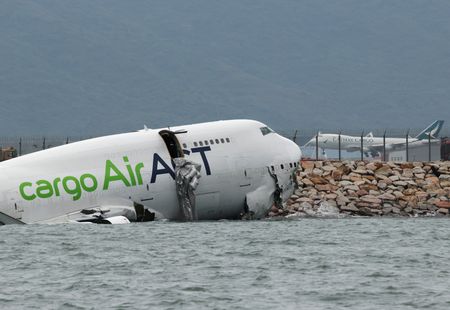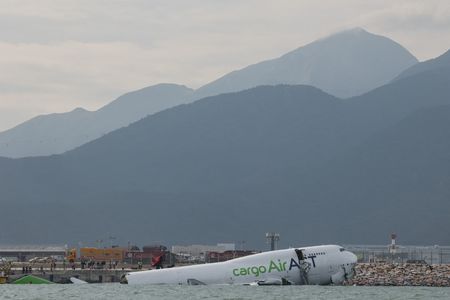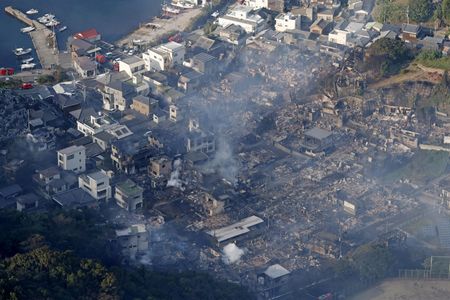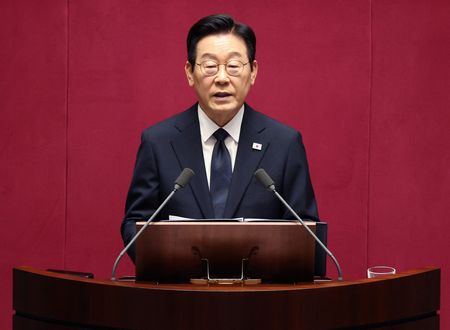By Farah Master
HONG KONG (Reuters) -The Turkish-operated cargo plane that skidded off the runway at Hong Kong’s international airport last month, killing two airport workers, experienced an acceleration in one of its four engines after landing, an initial investigation has found.
A preliminary report from Hong Kong’s Air Accident Investigation Authority (AAIA) released late on Tuesday said the flight from Dubai, operated by ACT Airlines on behalf of Emirates, was normal until shortly after landing.
The Boeing 747 cargo plane had been dispatched with the thrust reverser on engine 4 not working, which was allowable under aviation rules, the report said.
Thrust reversers redirect the engine thrust forward after landing to help slow the aircraft.
After the plane, being flown by the first officer, touched down on the runway, its automatic braking system disengaged and the captain took control, investigators said.
Shortly afterward, engine 4, on the far right side of the plane, accelerated to 90% thrust before surging to 106% to 107% over 12 seconds.
Thrust reversers were activated on the other three engines after the plane veered left off the runway. It struck a security vehicle, pushing it into the sea and killing the two airport workers inside.
It was the deadliest airport incident in the financial hub in more than 25 years.
All four crew on board survived but the plane was destroyed, with the tail section separating on impact, the report said.
Steven Dominique Cheung, chairman of the Hong Kong Professional Airline Pilots Association, said it was highly unusual for a plane to accelerate after landing.
With the right side engine at full power and other engines trying to slow the plane, there is “no way you can maintain control,” he said.
Boeing referred queries on the preliminary report to AAIA.
Emirates and ACT Airlines did not immediately respond to requests for comment.
The cause of the crash still needs to be determined by a full investigation. AAIA said it was collecting further data including technical issues related to the aircraft’s systems, engineering issues, maintenance records and flight crew qualifications.
Hong Kong’s Transport and Logistics Bureau said on its Facebook page it aimed to release a final report within a year, which is in line with international standards.
(Reporting by Farah Master; Editing by Jamie Freed)












